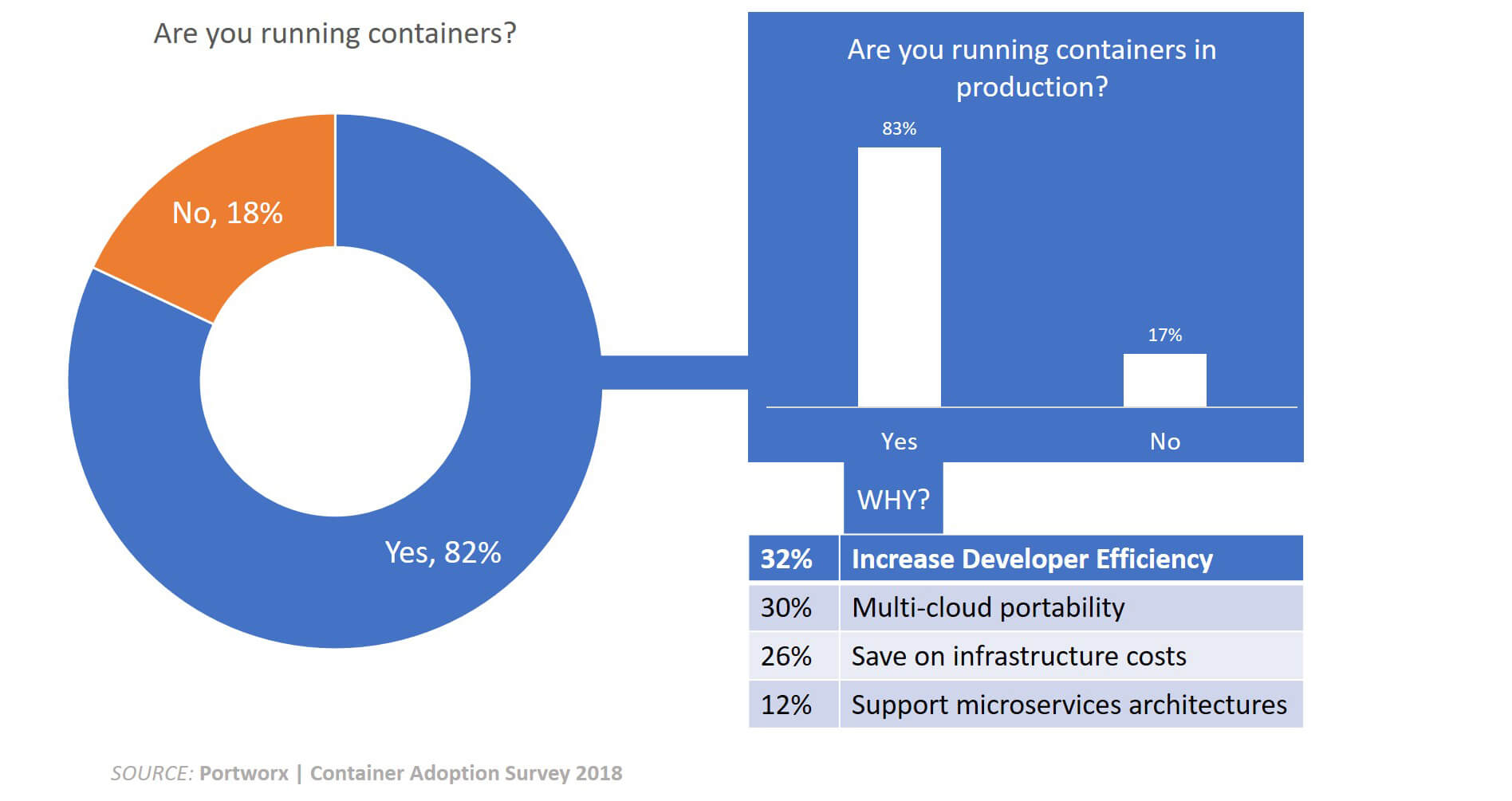Containers are Key to Multi-Cloud
You may recall a post from early 2017 in which I mentioned that containers were tired of being typecast. It was January, to be exact. Which means containers are no longer tired of being typecast, they are downright exhausted with it.
The proof of their weariness can be seen in a recent Portworx survey on container adoption. Significant gains in both container adoption - up to 82% - and use of containers in production - now at 83% - were reported.
But that's no surprise. Container adoption has been a steady course to consume budget for a couple years now. What may be a surprise is the reasons behind that adoption. Spoiler alert: it isn't really about microservices.

Right behind increasing developer efficiency sits the goal of multi-cloud portability. Containers are seen as the answer to portability the market has not yet been offered but desires. That desire is seen in the New Stack's "Guide to Serverless" report in the answers to what Serverless is failing at. The number one response (29% of respondents) was portability.
This is not a new concern, nor a new challenge, simply a new way to say "avoiding vendor lock-in." Any form of public cloud is a product, after all, and lock-in as a consequence of adopting a product is always a possibility. Portability is seen as a way out. Which makes containers appealing for a broader set of applications than is generally discussed by those enamored of emerging technology.
The truth is that containers are more likely to be found serving up traditional app stacks and infrastructure than they are running microservices. Case in point, a Sysdig report which analyzed data from 90,000 containers to discover what is being run inside them. At the top of the list is Java. Sprinkled in with emerging tech darlings like etcd, fluentd, Elastic Search, and mongoDB are tried and true favorites such as Apache, PostgreSQL, PHP, and Apache Tomcat.
The majority of organizations operate in a multi-cloud reality. And they're using containers to get apps into the cloud as well as out of the cloud should the need arise. Of the respondents to our State of Application Services 2019 who indicated they were exploring containerization as a result of digital transformation, only 11% were not adopting a multi-cloud approach.
It's not a good idea to typecast containers into a narrow role that involves only microservices, because they are able to do much more. If you don't look beyond the hype, you might miss the opportunity to take advantage of containers for more than just microservices.
